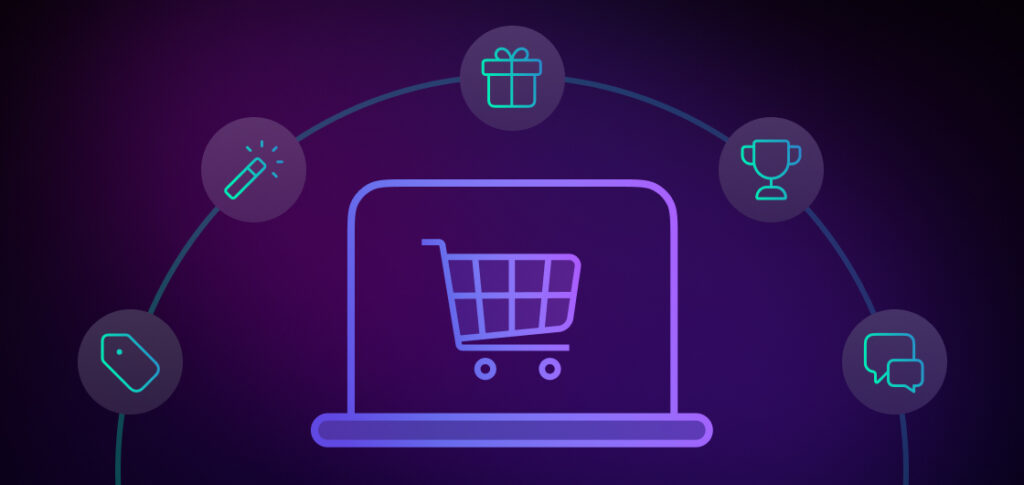
- Customer Experience
- Customer Loyalty
- Customer Marketing
- Customer Retention
- Ecommerce Marketing
- Loyalty
The Biggest Ecommerce Trends to Follow in 2025 (According to the Experts)
Megan Wenzl | Dec 2, 2024
Aug 29, 2024 | 9 minute read
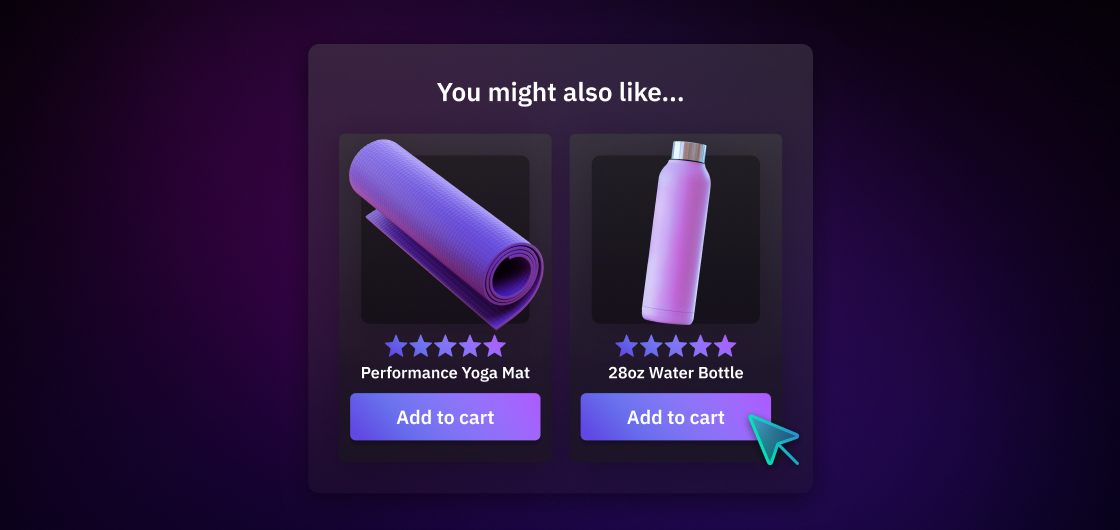
Megan Wenzl
Content Marketing Manager
Suggestive selling is a subtle yet powerful technique in ecommerce that involves guiding customers toward additional purchases or higher-value items without overtly pushing them. This method enhances the shopping experience by making it feel more personalized and less intrusive. By using suggestive selling techniques, brands can increase order values, boost sales, and build stronger customer relationships. Strategies like personalized recommendations, bundles, customer reviews, and loyalty programs can significantly improve the effectiveness. Okendo can help streamline these techniques to maximize your sales potential and customer satisfaction.
It is an inconvenient truth that the most effective sales technique is oftentimes the most difficult to master in ecommerce. Most marketers and customers are familiar with hard selling techniques which are often experienced at car dealerships, appliance or furniture stores, or other big box retailers. Suggestive selling techniques, however, are a bit trickier to identify because of their subtlety. Hard selling is straightforward to practice, but comes across as disingenuous, whereas suggestive selling is trustworthy and effective, but difficult to execute.
While both sales tactics are useful in different scenarios, ecommerce is most conducive to suggestive selling techniques. Ecommerce allows for gather customer data, monitoring customer behavior, quickly adjusting the experience, and employing suggestive selling techniques to nudge customers to purchase. This guide will explain seven essential suggestive selling techniques to try in your ecommerce experience for highly effective, sales-driving results.
Imagine a traditional mall kiosk. These kiosks, often in high-traffic areas, embody hard selling techniques—all products on display, minimal imagery or signage, discounts galore, and pushy salespeople roping you into a pitch or demo. While hard selling is effective in certain situations, the drawbacks are that it hinders trust, fails to foster brand loyalty, and can come across as gimmicky or even scammy.
Suggestive selling, on the other hand, is more like a standalone, upscale boutique. Mannequins showcasing complete outfits, curated assortments, hidden price tags, a brand rep who greets you at the entrance, and who strategically places matching products in your fitting room. These small details and cues subtly prompt customers to purchase without giving them the impression they are being “sold to.” Perhaps the most desired effect of suggestive selling is for customers to believe they are making purchasing decisions unprompted and without falling for a sales technique.
In ecommerce, suggestive selling, or employing subtle sales techniques that guide customers through the customer journey to ultimately make a purchase, is vital to creating a personable, comfortable, and enjoyable onsite experience. Customers who visit an ecommerce site generally already know what they are browsing for. It is suggestive selling’s role to get customers to spend more by purchasing additional items, choosing higher-priced items, or engaging with the brand in other ways to make repeat purchases down the road.
There are tools that can help with suggestive selling to boost sales, including a dedicated upselling tool like AfterSell, which can help craft personalized and irresistible product recommendations for every step of the buyer’s journey.
Suggestive selling can be difficult to achieve in ecommerce, but understanding the most opportune placements can help you create an effective strategy. Consider these techniques as you start to employ suggestive selling throughout the customer journey.
Suggestive selling online should have the same effect as a masterful in-person sales associate. One of the techniques that high-performing sales associates use is tailoring their suggestions to each customer based on their observations. A sales associate might, for example, take note of a customer’s demeanor, appearance, movements throughout the store, and requests before offering a product suggestion.
This same effect can be imitated on your online store with personalized product recommendations. Different zones throughout your website can be used to display product suggestions for enhanced product discovery and awareness. These suggestions should be based on the customers’ interactions or behaviors throughout the site so that the experience feels tailored. Personalized product recommendations are best used in the form of a quiz.
As Robert Alan, CEO of Monumental says, “Outcomes related to personalized product suggestions may include increased conversion, customer loyalty, or reduced cart abandonment. But I like to think about it this way: they’re a great way to help customers feel like they’re seen. If they’re done well, personalized suggestions are like a star salesperson on the retail floor.”
An effective way to suggestively sell more items per purchase is by creating bundles or discounts with a spend qualifier. Examples of suggestive selling bundles or discounts include buy one get one 50% off, two for $50 (when individually the product is $30), or 20% off $100 or more.
A bundle or qualifying discount encourages a customer to spend more in order to save more. It also has the effect of gamifying the shopping experience so that the customer purchases in a certain way in order to save the most amount of money. While the original price is available to customers, a bundle or discount suggests that they could get a better deal if they choose to purchase more.
Displaying customer reviews on ecommerce sites is a suggestive selling technique that employs user-generated content to encourage purchases. Instead of a salesperson or the brand convincing customers to make a purchase, customer reviews and comments are previous customers offering an unbiased opinion and vouching for the brand and its products.
Reviews also offer zero-party data to help brands hone their personalized product recommendations and customer shopping experience. Slate Milk, for example, used their review capture form in Okendo Reviews to ask customers for their favorite flavor preferences and then personalized marketing content to reflect their selected flavors. This is a subtle way to harness customer reviews in order to inform suggestive selling techniques throughout the customer shopping experience.
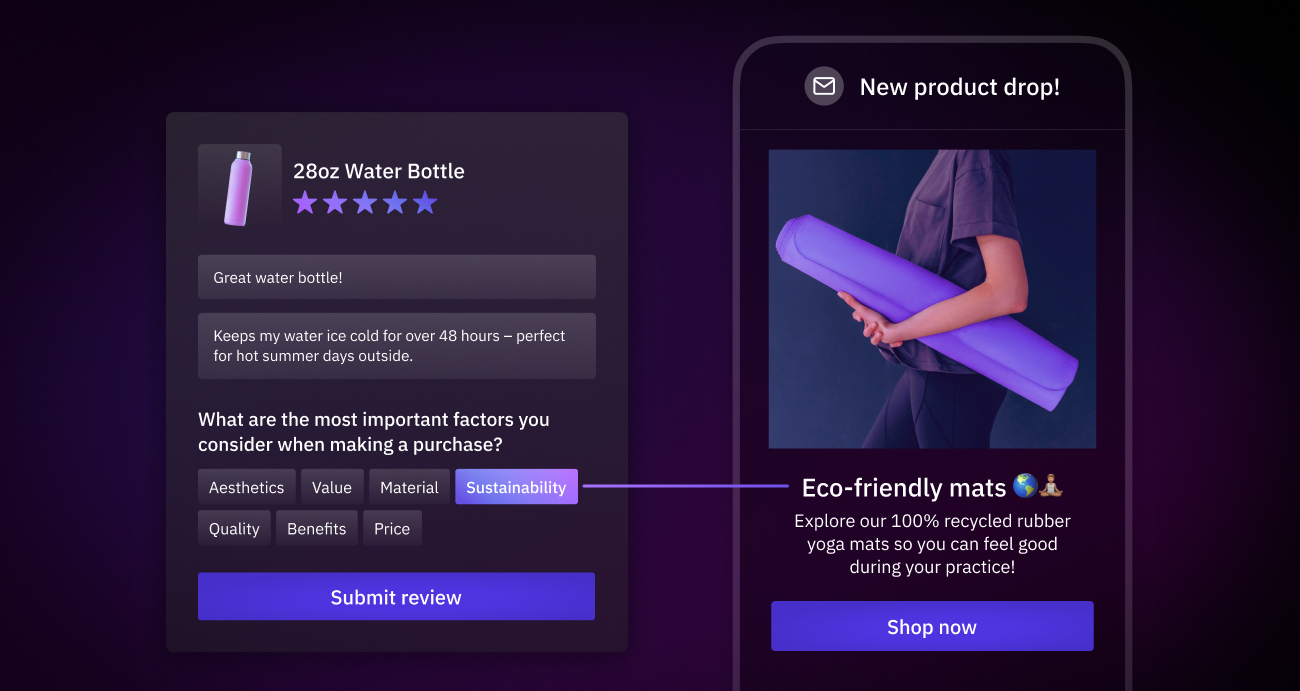
Product recommendation quizzes can help brands engage the customers in a helpful and entertaining experience while simultaneously making personalized product suggestions. For example, a skincare cosmetics brand might deploy a quiz to ask customers about their skin concerns and make product suggestions for their ideal skincare routine.
Product recommendation quizzes further gather zero-party data but also suggestively sell products while being helpful to the customer. They also aid in product discovery and expose customers to products they might not have originally considered. Okendo Quizzes allows for full customization of the quiz experience and the product recommendations to best employ suggestive selling techniques through onsite quizzes.
A customer loyalty program allows for brands to employ suggestive selling techniques beyond just a single customer shopping journey. After gathering customer information and convincing a customer to interact with the brand further by signing up for a loyalty program, brands can re-engage customers by offering personalized discounts, rewards for interacting with the brand, and exclusive content that builds brand loyalty and trust.
Customer loyalty programs are a subtle form of suggestive selling because customers opt in to further interaction with the brand making it feel elective rather than being exposed to unwanted sales content. In a sense, a loyalty program is playing the long game for sales rather than aiming for just an immediate sale.
A high-performing salesperson knows the benefit of asking customers questions. Not only do customers feel heard and understood, but the salesperson can discreetly collect information on their customers and tailor the message to best serve their needs. In ecommerce, this same effect is best achieved through pre and post-purchase surveys.
Surveys prompt the customer to provide feedback on how the brand can improve to better assist customers. This represents valuable feedback that the brand can then use to adjust the customer shopping journey and employ further suggestive selling techniques. A pre or post-purchase survey might notify brands that their pop-ups are overbearing, that their assortment has some holes, or that their site is slow to load. By making improvements and simultaneously letting the customer feel heard, the brand is suggesting that they are trustworthy and worthy of a purchase.
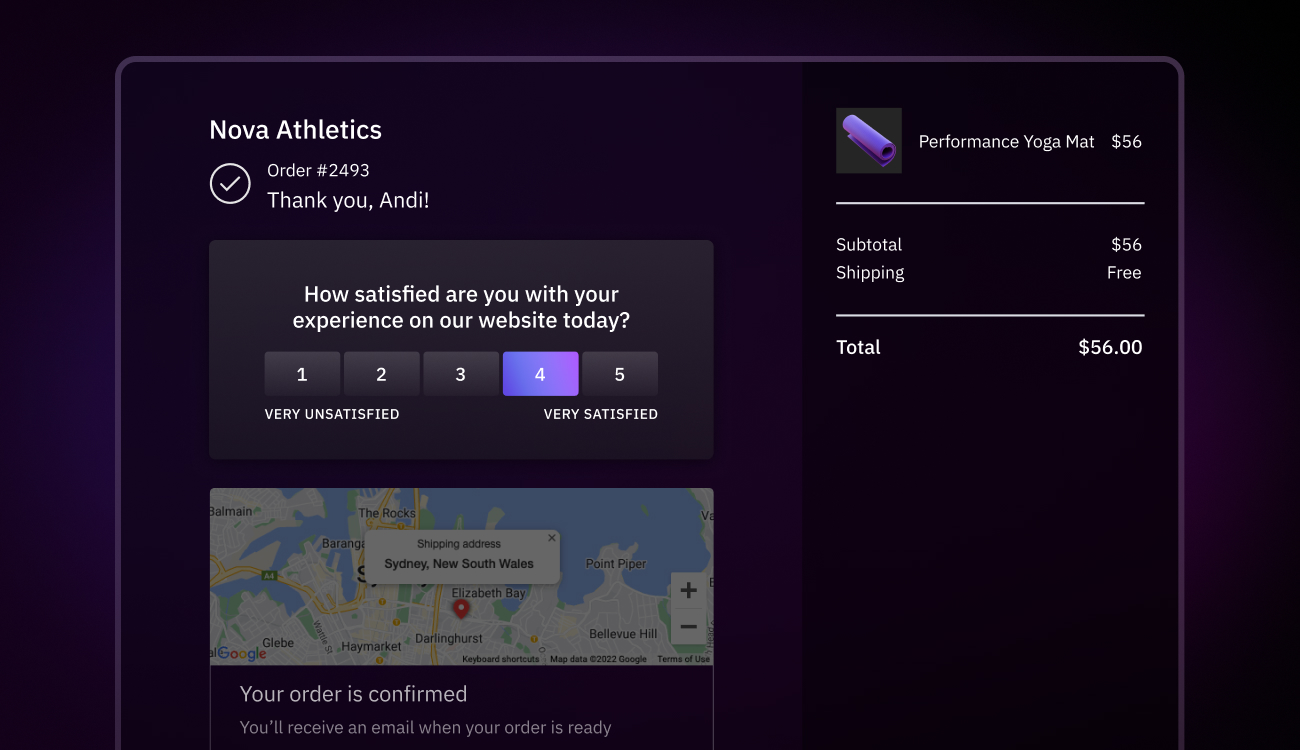
Customers often visit websites with the intent of buying a specific item. Since these customers are already highly intent shoppers, brands can use suggestive selling techniques to upsell on premium products or on add-ons that would complement the original item.
A less expensive version of a product might serve to bring traffic to an ecommerce site and pique customers’ interest, but once customers are in the middle of the shopping journey, brands can strategically recommend upgraded or premium versions of the same product or add-ons which complement the original product. Once again, the original product and less expensive version are still available to the customers, but after being exposed to different versions, customers might opt for the more premium option.
Since customers are not visiting a brick-and-mortar store or interacting with a sales associate when they frequent an ecommerce site, a layer of skepticism exists in every online visit or purchase experience. This skepticism or hesitation can be exacerbated by gimmicky techniques that make the customer aware they’re being sold to.
Suggestive selling creates a much more approachable, comfortable, and trustworthy experience. It preserves the customer’s decision-making while encouraging them to make a purchase or to purchase certain products. In short, suggestive selling in ecommerce combines the self-service nature of ecommerce while employing the effectiveness of a masterful, hands-on salesperson.
Beauty of Joseon: This skincare brand used Okendo Quizzes to create a custom quiz that addressed each customer’s skin concern. It also helped expose customers to a wider range of product suggestions to create a full skincare routine.
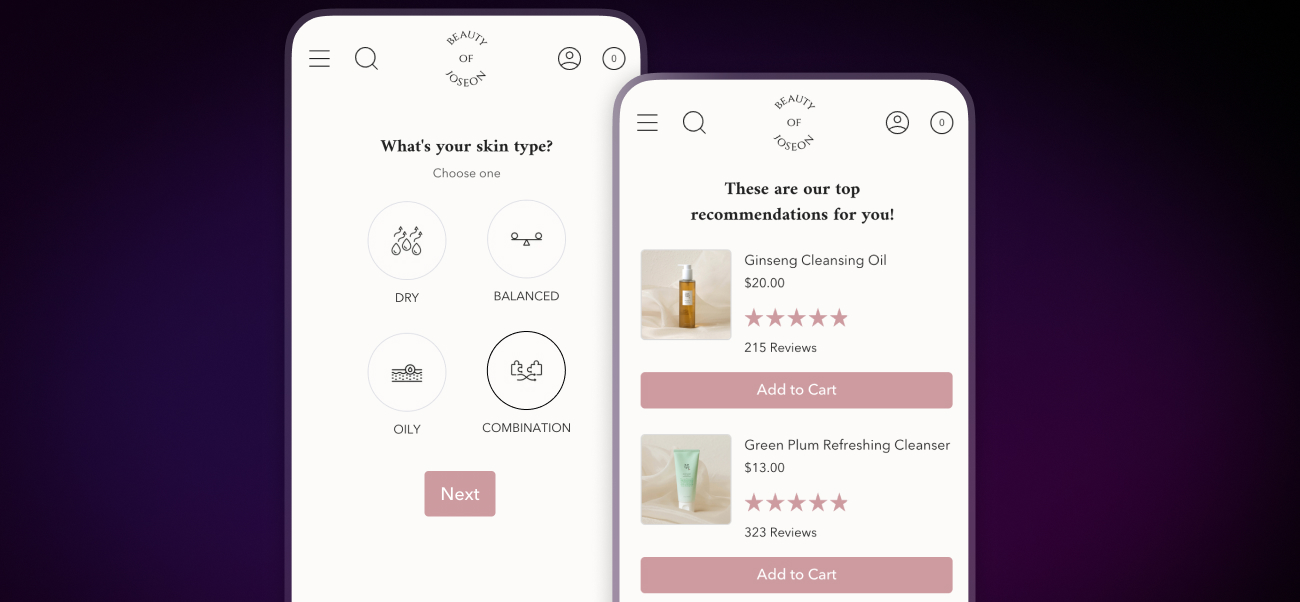
Bed Threads: Bed Threads used zero-party data collected from Okendo Quizzes to customize email marketing communications in Klaviyo and create personalized product recommendations based on customers’ bedding color matches.
Luna Bronze: Luna Bronze uses Okendo Loyalty to inform Superfans about new products and create opportunities to interact with highly engaged audiences.
Okendo can help brands create a suggestive selling strategy throughout the customer experience with our full suite of suggestive selling services. Use Okendo Loyalty to re-engage shoppers beyond their first purchase, Okendo Reviews to utilize user-generated content and social proof, and Okendo Quizzes to provide a personalized shopping experience. Book a demo with us to discover how Okendo can enhance your brand’s customer shopping experience and create sustainable revenue growth.
Suggestive selling techniques might be difficult to accomplish, but they are especially effective on ecommerce websites where preserving customer privacy and self-service is key. Okendo can help your brand make suggestive selling strategies a no-brainer so that your brand can increase orders, profits, order values, and even repeat purchases for long-term growth.
Related articles
Ready to learn more?